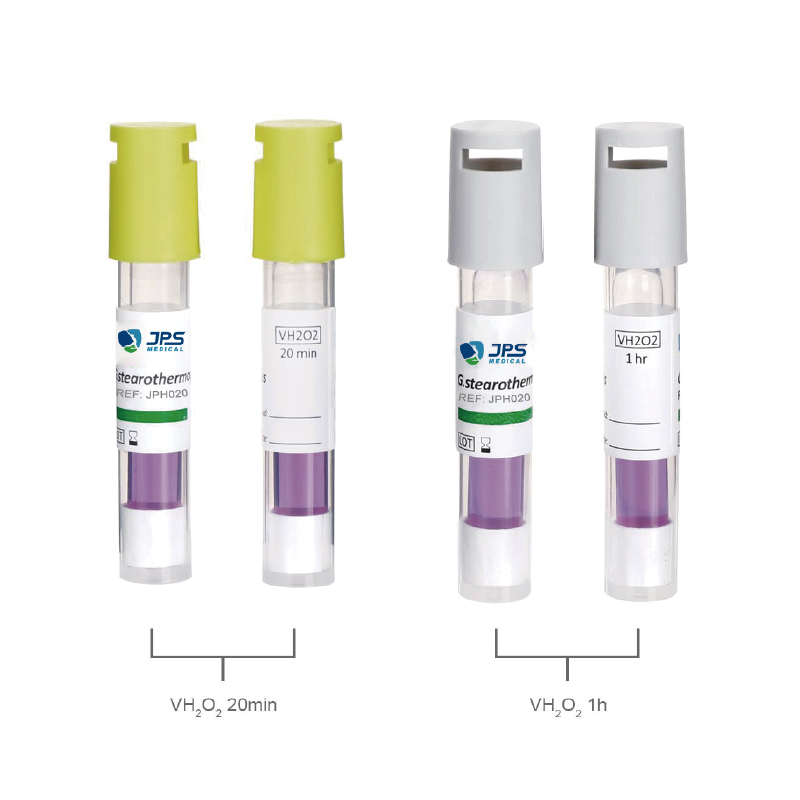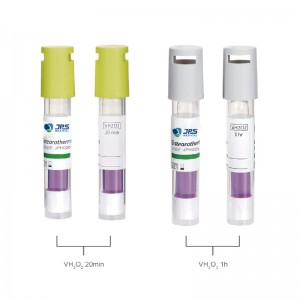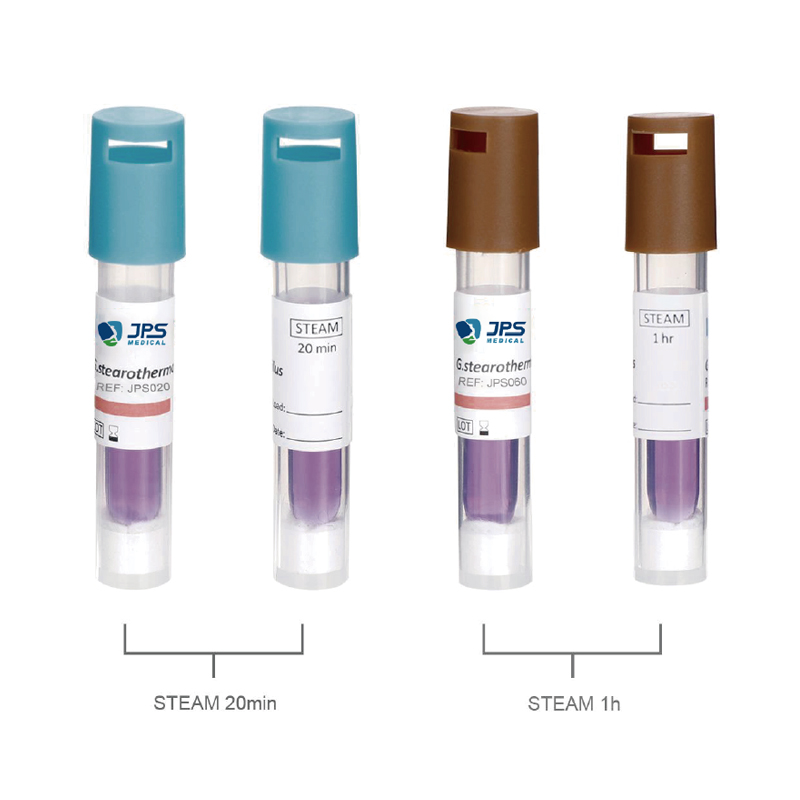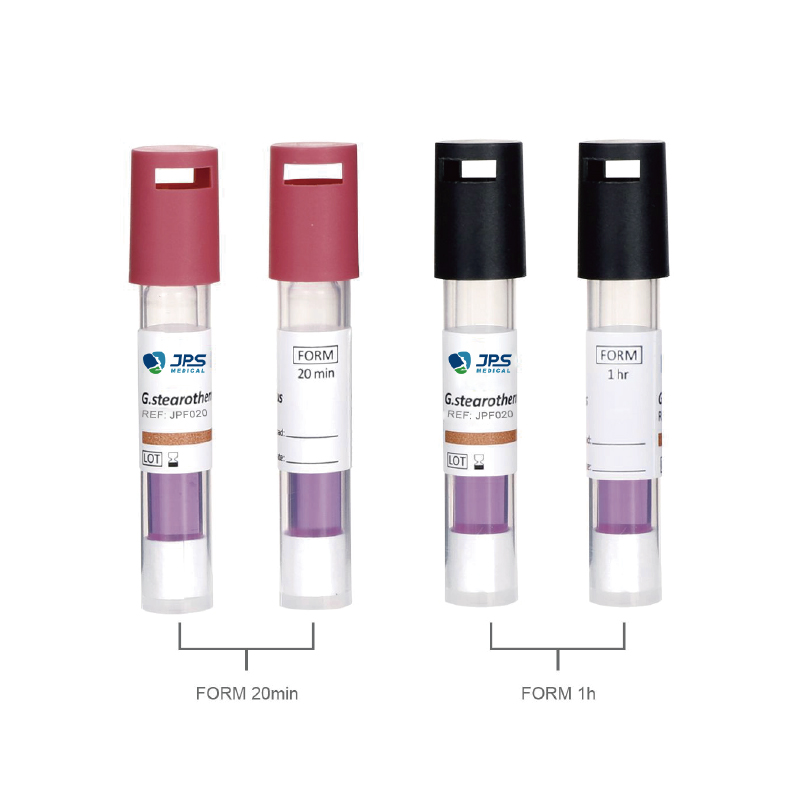Vaporized Hydrogen Peroxide Biological Sterilization
| PRPDUCTS | TIME | MODEL |
| Vaporized Hydrogen Peroxide Biological Sterilization (Ultra Super Rapid Readout) | 20min | JPE020 |
| Vaporized Hydrogen Peroxide Biological Sterilization (Super Rapid Readout) | 1hr | JPE060 |
| Vaporized Hydrogen Peroxide Biological Sterilization (Rapid Readout) | 3hr | JPE180 |
| Vaporized Hydrogen Peroxide Biological Sterilization Indicators | 24hr | JPE144 |
| Vaporized Hydrogen Peroxide Biological Sterilization Indicators | 48hr | JPE288 |
Preparation:
●The items to be sterilized are placed in a sterilization chamber. This chamber must be airtight to contain the vaporized hydrogen peroxide.
●The chamber is evacuated to remove air and moisture, which can interfere with the sterilization process.
Vaporization:
●Hydrogen peroxide solution, typically at a concentration of 35-59%, is vaporized and introduced into the chamber.
●The vaporized hydrogen peroxide spreads throughout the chamber, contacting all exposed surfaces of the items being sterilized.
Sterilization:
●The vaporized hydrogen peroxide disrupts cellular components and metabolic functions of microorganisms, effectively killing bacteria, viruses, fungi, and spores.
●Exposure times can vary, but the process is generally completed within 30 to 60 minutes.
Aeration:
●After the sterilization cycle, the chamber is aerated to remove residual hydrogen peroxide vapor.
●Aeration ensures that the items are safe to handle and free from harmful residuals.
Medical Devices:
●Ideal for sterilizing heat-sensitive and moisture-sensitive medical devices and equipment.
●Commonly used for endoscopes, surgical instruments, and other delicate medical tools.
Pharmaceutical Industry:
●Used for sterilizing manufacturing equipment and cleanrooms.
●Helps maintain aseptic conditions in pharmaceutical production environments.
Laboratories:
●Employed in laboratory settings for sterilizing equipment, work surfaces, and containment units.
●Ensures a contamination-free environment for sensitive experiments and procedures.
Healthcare Facilities:
●Used to decontaminate patient rooms, operating theaters, and other critical areas.
●Helps control the spread of infections and maintain high standards of hygiene.
Efficacy:
●Effective against a broad spectrum of microorganisms, including resistant bacterial spores.
●Provides high levels of sterility assurance.
Material Compatibility:
●Suitable for a wide range of materials, including plastics, metals, and electronics.
●Less likely to cause damage compared to other sterilization methods like steam autoclaving.
Low Temperature:
●Operates at low temperatures, making it ideal for heat-sensitive items.
●Prevents thermal damage to delicate instruments.
Residual-Free:
●Breaks down into water and oxygen, leaving no toxic residues.
●Safe for both the sterilized items and the environment.
Speed:
●Relatively quick process compared to some other sterilization methods.
●Enhances workflow efficiency by reducing turnaround times.
Biological Indicators (BIs):
●Contain spores of resistant microorganisms, typically Geobacillus stearothermophilus.
●Placed inside the sterilization chamber to verify the efficacy of the VHP process.
●After sterilization, BIs are incubated to check for spore viability, ensuring the process has achieved the desired sterility level.
Chemical Indicators (CIs):
●Change color or other physical properties to indicate exposure to VHP.
●Provide immediate, though less definitive, confirmation that sterilization conditions were met.
Physical Monitoring:
●Sensors and instruments monitor critical parameters such as hydrogen peroxide concentration, temperature, humidity, and exposure time.
●Ensures that the sterilization cycle conforms to specified standards.







